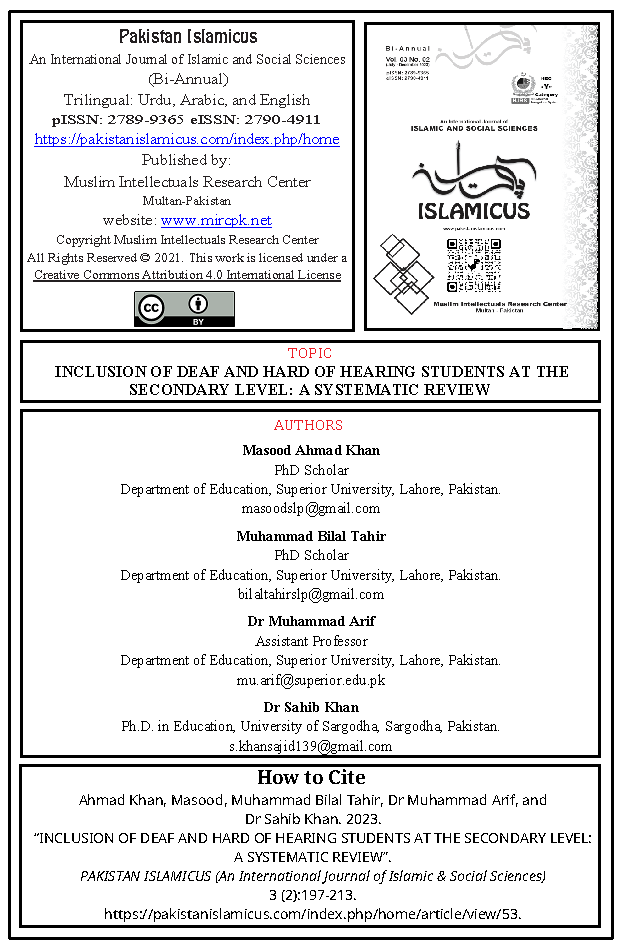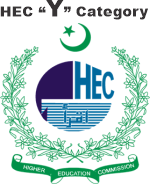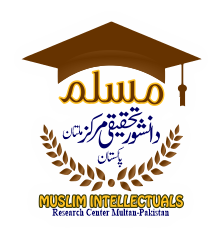INCLUSION OF DEAF AND HARD OF HEARING STUDENTS AT THE SECONDARY LEVEL: A SYSTEMATIC REVIEW
Keywords:
Inclusive Education, Deaf and Hard of Hearing, Facilitators, BarriersAbstract
The goal of inclusive education is to provide a learning environment where all students, regardless of their individual strengths and weaknesses, can thrive. This qualitative systematic review set out to investigate what characteristics help or hurt D/HH pupils' ability to participate in mainstream secondary school settings. The major goal was to determine successful approaches and barriers to their full participation in regular classrooms. With an emphasis on secondary school inclusion for D/HH children, a thorough literature analysis was undertaken covering the years 2010 through 2023. Several boosters were found after conducting the analysis; these were team-based instruction, individualized assistance, cooperative learning, and motivational techniques. On the other side, it brought to light obstacles like restricted access to educational opportunities, policy implementation hurdles, regulatory gaps, decreased participation in general education classes, and peer interaction problems. Supportive learning settings, healthy peer relationships, and inclusive classroom methods were all emphasized in the study as a means to improve the inclusion experience for D/HH children. The evidence-based recommendations covered a wide range of topics, including better teacher training, specialized support, improved social ties, increased co-teaching, revised policies, and post-secondary aid. Further exploration of the cultural settings and constraints faced by D/HH students was emphasized in this study, with an eye toward improving secondary education for all students.
References
Ainscow, M. (2020). Promoting inclusion and equity in education: lessons from international experiences. https://doi.org/10.1080/20020317.2020.1729587
Alasim, K. N. (2018). Participation and interaction of deaf and hard-of-hearing students in inclusion classrooms. International Journal of Special Education, 33(2), 493-506. https://eric.ed.gov/?id=EJ1185582
Bezyak, J. L., Sabella, S., Hammel, J., McDonald, K., Jones, R. A., & Barton, D. (2020). Community participation and public transportation barriers experienced by people with disabilities. Disability and Rehabilitation, 42(23), 3275-3283
https://doi.org/10.1080/09638288.2019.1590469
Bronfenbrenner, U., & Morris, P. A. (2006). The bioecological model of human development. Handbook of child psychology, 1, 793-828.https://doi.org/10.1002/9780470147658.chpsy0114
Burgstahler, S., & Doe, T. (2004). The role of technology in preparing youth with disabilities for postsecondary education and employment. Journal of Special Education Technology, 19(4), 7-20. https://doi.org/10.1177/016264340301800401
Cameron, D. L., Nilholm, C., & Persson, B. (2012). School district administrators' perspectives on special education policy and practice in Norway and Sweden. Scandinavian Journal of Disability Research, 14(3), 212-231. https://doi.org/10.1080/15017419.2011.558241
Clapham, K., Manning, C., Williams, K., O'Brien, G., & Sutherland, M. (2017). Using a logic model to evaluate the Kids Together early education inclusion program for children with disabilities and additional needs. Evaluation and Program Planning, 61, 96-105. https://doi.org/10.1016/j.evalprogplan.2016.12.004
Eriks-Brophy, A., Durieux-Smith, A., Olds, J., Fitzpatrick, E., Duquette, C., & Whittingham, J. (2007). Facilitators and barriers to the integration of orally educated children and youth with hearing loss into their families and communities. Volta Review, 107(1). https://doi.org/10.17955/tvr.107.1.539
Flood, M., & Banks, J. (2021). Universal Design for Learning: Is it gaining momentum in Irish education?. Education Sciences, 11(7), 341. https://doi.org/10.3390/educsci11070341
Furness, E., Li, I. W., Patterson, L., Brennan-Jones, C. G., Eikelboom, R. H., Cross, D., & Fisher, C. (2019). A qualitative exploration of the role and needs of classroom teachers in supporting the mental health and well-being of deaf and hard-of-hearing children. Language, Speech, and Hearing Services in Schools, 50(3), 399-415.
https://doi.org/10.1044/2019_LSHSS-18-0085
Gale, T., Mills, C., & Cross, R. (2017). Socially inclusive teaching: Belief, design, action as pedagogic work. Journal of teacher education, 68(3), 345-356.
https://doi.org/10.1177/0022487116685754
Goodley, D. (2014). Disability studies: An interdisciplinary introduction. Sage.
Halinen, I., & Järvinen, R. (2008). Towards inclusive education: the case of Finland. Prospects, 38(1), 77-97. https://doi.org/10.1007/s11125-008-9061-2
Hintermair, M. (2013). Parental attitudes towards integrated and segregated education of deaf and hard-of-hearing children. Journal of Deaf Studies and Deaf Education, 18(2), 161-174. https://doi.org/10.1093/deafed/ens073 .
Hymel, S., & Katz, J. (2019). Designing classrooms for diversity: Fostering social inclusion. Educational Psychologist, 54(4), 331-339. https://doi.org/10.1080/00461520.2019.1652098
Johnson, R. E., Liddell, S. K., & Erting, C. J. (1989). Unlocking the curriculum: Principles for achieving access in deaf education. Gallaudet University Press.
Keles, S., Ten Braak, D., & Munthe, E. (2022). Inclusion of students with special education needs in Nordic countries: a systematic scoping review. Scandinavian Journal of Educational Research, 1-16.
Kiuppis, F. (2014). Why (not) associate the principle of inclusion with disability? Tracing connections from the start of the 'Salamanca Process'. International Journal of Inclusive Education, 18(7), 746-761. https://doi.org/10.1080/13603116.2013.826289
Kushalnagar, P., Mathur, G., Moreland, C. J., Napoli, D. J., Osterling, W., Padden, C., & Rathmann, C. (2010). Infants and children with hearing loss need early language access. Journal of Clinical Ethics, 21(2), 143-154. https://doi.org/10.1086/JCE201021208
Lambe, J., & Bones, R. (2006). Student teachers' perceptions about inclusive classroom teaching in Northern Ireland prior to teaching practice experience. European Journal of Special Needs Education, 21(2), 167-186. https://doi.org/10.1080/08856250600600828
Lederberg, A. R., Schick, B., & Spencer, P. E. (2013). Language and literacy development of deaf and hard-of-hearing children: successes and challenges. Developmental psychology, 49(1), 15. https://doi.org/10.1037/a0029558
Lederberg, A. R., Schick, B., & Spencer, P. E. (2013). Language and literacy development of deaf and hard-of-hearing children: successes and challenges. Developmental psychology, 49(1), 15. https://doi.org/10.1037/a0029558
Lindner, K. T., Schwab, S., Emara, M., & Avramidis, E. (2023). Do teachers favor the inclusion of all students? A systematic review of primary schoolteachers' attitudes towards inclusive education. European Journal of Special Needs Education, 1-22.
https://doi.org/10.1080/08856257.2023.2172894
Lissi, M. R., Iturriaga, C., Sebastián, C., Vergara, M., Henríquez, C., & Hofmann, S. (2017). Deaf and hard of hearing students' opportunities for learning in a regular secondary school in Chile: Teacher practices and beliefs. Journal of Developmental and Physical Disabilities, 29(1), 55-75. https://doi.org/10.1007/s10882-016-9495-z
Marschark, M., & Hauser, P. C. (Eds.). (2012). Deaf cognition: Foundations and outcomes. Oxford University Press.
Miles, S., & Singal, N. (2010). The Education for all and inclusive education debate: Conflict, Contradiction or opportunity? international Journal of inclusive Education, 14(1), 1-15. https://doi.org/10.1080/13603110802265125
Miranda, E. S., & Brazorotto, J. S. (2018). Facilitators and barriers for the use of the FM System in school-age children with hearing loss. Revista CEFAC, 20, 583-594. https://doi.org/10.1590/1982-021620182055118
Peters, S., & Oliver, L. A. (2009). Achieving quality and equity through inclusive education in an era of high-stakes testing. Prospects, 39, 265-279.
https://doi.org/10.1007/s11125-009-9116-z
Punch, R., & Duncan, J. (2022). The role of social capital in the transition to postsecondary education for students who are deaf or hard of hearing. American Annals of the Deaf, 167(3), 334-354. https://doi.org/10.1353/aad.2022.0031
Reindal, S. M. (2016). Discussing inclusive education: An inquiry into different interpretations and a search for ethical aspects of inclusion using the capabilities approach. European Journal of Special Needs Education, 31(1), 1-12. https://doi.org/10.1080/08856257.2015.1087123
Shakespeare, T. (2013). The social model of disability. In L. J. Davis (Ed.), The Disability Studies Reader (4th ed., pp. 223-232). Routledge.
Todorov, M., Galvin, K., Punch, R., Klieve, S., & Rickards, F. (2022). Barriers and facilitators to engaging in mainstream primary school classrooms: Voices of students who are deaf or hard-of-hearing. Deafness & Education International, 24(1), 2-23.
https://doi.org/10.1080/14643154.2021.1992829
Wilkins, R. (2020). Challenges in accessing specialized resources for Deaf and Hard of Hearing
students: Implications for inclusion. Journal of Special Education, 25(4), 347-362.
Yeo, L. S., Neihart, M., Tang, H. N., Chong, W. H., & Huan, V. S. (2011). An inclusion initiative in Singapore for preschool children with special needs. Asia Pacific Journal of Education, 31(2), 143-158. https://doi.org/10.1080/02188791.2011.566990

Downloads
Published
Issue
Section
License
Copyright (c) 2023 PAKISTAN ISLAMICUS (An International Journal of Islamic & Social Sciences)

This work is licensed under a Creative Commons Attribution 4.0 International License.
This work is licensed under a Creative Commons Attribution 4.0 International License.

































